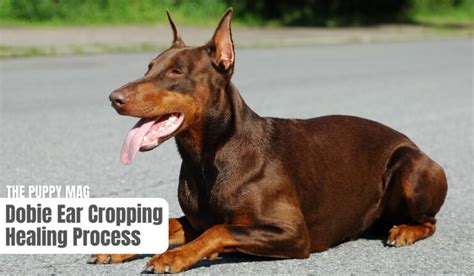Doberman Cropped Ears: A Comprehensive Healing Guide
Doberman Pinschers, with their sleek physique and striking presence, are often associated with cropped ears. While ear cropping is a controversial topic, this guide focuses on the post-operative care necessary for a Doberman with cropped ears, assuming the procedure has already been performed by a qualified veterinarian. This information is for educational purposes only and should not replace professional veterinary advice. Always consult your veterinarian for any concerns about your dog's health.
Why Are Doberman's Ears Cropped?
Historically, ear cropping served practical purposes, such as protecting ears from injury in working dogs. Today, cropping is often done for aesthetic reasons, conforming to breed standards in some contexts. However, it's crucial to understand that ear cropping is illegal in many countries and regions. The legality of the procedure varies significantly by location, and responsible pet ownership involves understanding and adhering to the laws in your area.
The Post-Operative Healing Process: What to Expect
The healing process after ear cropping in Dobermans can take several weeks, even months. Pain management is critical during this period. Your veterinarian will likely prescribe pain medication to keep your dog comfortable. Regular monitoring of the incision sites is vital, and signs of infection, such as excessive swelling, redness, discharge (pus), or foul odor, should be reported immediately to your veterinarian.
Daily Care and Cleaning:
Your veterinarian will provide specific instructions on cleaning the incisions. This typically involves gentle cleansing with a veterinarian-approved solution, following the prescribed frequency and method. Avoid using harsh chemicals or homemade solutions. Keep the area clean and dry to prevent infection. This is crucial for successful healing.
Post-Operative Cone/Collar:
An Elizabethan collar (e-collar or cone) will likely be used to prevent your Doberman from scratching, licking, or biting at the surgical sites. While your dog might initially find the cone uncomfortable, it's essential for preventing complications and ensuring proper healing. Consider using a soft cone if your dog seems particularly stressed by the traditional plastic cone.
Preventing Infection:
Maintaining a clean environment is crucial to prevent infections. Monitor your Doberman closely for any signs of infection. Regular check-ups with your veterinarian are necessary to ensure the healing process is progressing as expected. Your vet might recommend a course of antibiotics.
Addressing Common Post-Operative Concerns
How Long Does It Take for Doberman Cropped Ears to Heal?
Complete healing can take anywhere from 6 to 8 weeks, or even longer. The healing process is gradual, and the ears will gradually stiffen and stand erect as the cartilage heals. Patience is key.
What Should I Do if My Doberman's Cropped Ears Become Infected?
Contact your veterinarian immediately. Early intervention is vital in treating infections. Do not attempt to self-treat.
How Do I Help My Doberman's Cropped Ears Stand Up?
Proper post-operative care and the use of ear posts (small, typically padded supports) as directed by your veterinarian can aid in the ears standing upright. Never force the ears.
Can I Use Homemade Remedies to Clean the Incisions?
No. Only use solutions prescribed or recommended by your veterinarian. Homemade remedies can introduce harmful bacteria and hinder the healing process.
My Doberman is excessively licking or scratching at its ears.
This is a common sign of discomfort. Ensure the cone is fitted correctly, and if the licking/scratching persists, contact your vet to rule out complications or underlying discomfort.
The Ethical Considerations of Ear Cropping
It is important to reiterate that ear cropping is a contentious practice. Many animal welfare organizations oppose it, citing ethical concerns regarding animal mutilation and the potential for pain and discomfort. Before considering ear cropping, thoroughly research the legal implications and ethical considerations in your area.
This comprehensive healing guide provides valuable insights into caring for a Doberman with cropped ears. Remember, the information provided here is not a substitute for professional veterinary care. Always consult your veterinarian for personalized advice and guidance. The health and well-being of your Doberman should be the top priority.

